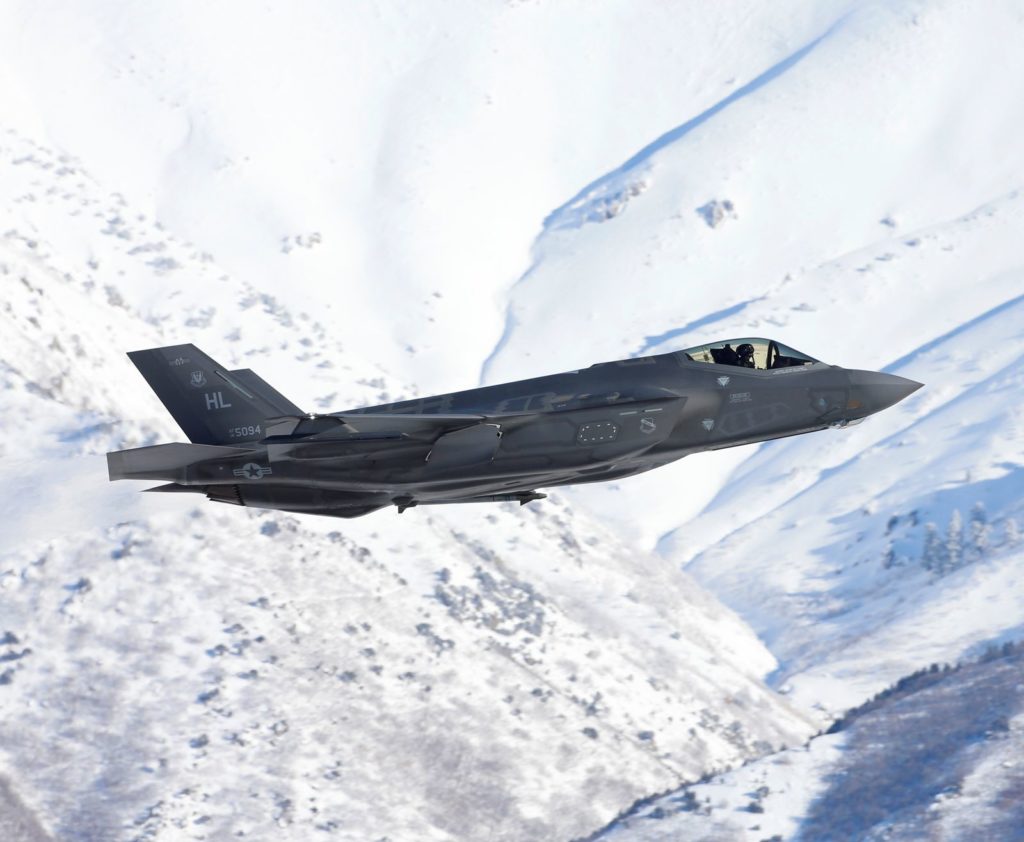The Air Force is working on a sixth-generation stealth fighter jet. What kind of abilities might it have? Will it see and destroy large formations of dispersed enemy fighters many miles away with yet-to-existing targeting sensors? Will it fire jam-proof, course-correcting, autonomously-guided air-to-air and air-to-ground weapons with yet-to-exist precision, target tracking and explosive effects? Will it maneuver its way into advantageous combat positions with yet-to-existing vectoring and thrust propulsion technology? Will it incorporate yet-to-exist lightweight, radar absorbent composite materials? Will it have smart skins, or yet-to-exist sensors woven into the fuselage of the jet? Will it advance yet-to-exist new paradigms of stealth performance able to elude surveillance and targeting enemy air defense radar?
Or could the now-airborne new sixth-generation stealth fighter already incorporate some of these breakthrough attributes? Perhaps.
There are only a few things known about the new stealth fighter. One it has already taken to the skies, and two, it came to life successfully on a massively expedited time frame due to the promise and performance of digital engineering. Digital engineering, or DE as it’s called, is fast gaining momentum as a way to analyze technologies, design specs and even weapons and platform performance, without having to bend metal. Computer modeling, aided by advanced simulation and algorithms able to not just approximate but closely replicate performance and engineering specifics of great relevance to new weapons systems.
Given this kind of early track for digital engineering, which pertains not only to the new sixth-generation stealth fighter it is by no means surprising that Pentagon’s industry partners such as Raytheon are working internally on innovations intended to bring digital engineering to newer levels of proficiency.
Tay Fitzgerald, Acting Vice President of ACT, Raytheon Intelligence & Space, explained that Raytheon is experimenting with new applications of digital engineering able to more closely approximate radio frequency (RF)-reliant weapons and sensing performance as they may apply to sixth-generation aircraft. She told The National Interest that Raytheon engineers are now working on ways to accelerate and refine elements of prototyping, testing and new computer modeling applications. She said digital engineering is a process which massively expedites the design process and creative work, lessening a potentially cumbersome bureaucratic process.
“We’re developing the frameworks and processes and applying them to unclassified programs across the company that will accelerate programs across the board,” Fitzgerald said.
This acceleration is valuable for Raytheon engineers and computer scientists, who are able to draw upon automated software requirements and massively increase efficiency, she added.
This technical phenomenon is of particular relevance when it comes to on-board electronics, computing, electronic warfare and various kinds of RF applications for communications and targeting where the threats must be countered with rapid technology refresh. A Defense Advanced Research Projects Agency (DARPA) essay goes on to explain that this kind of mixed-mode electronics support radar, communications systems and other vital fighter jet functions, while demanding or needing more information processing bandwidth and much higher levels of “speed, fidelity, capacity and precision.”
Electronic warfare technology enabling a pilot to jam incoming anti-aircraft or air-to-air weapons, computer data processing intended to take F-35-like “sensor fusion” to an entirely new dimension and advanced, AI-aligned computer algorithms able to discern, gather, analyze and organize disparate pools of data in a matter of milliseconds, are all in large measure enabled by this kind of electronic mixed-mode integration between RF and digital computing.
To advance these kinds of RF mixed-mode interfaces, DARPA is working with Raytheon, BAE Systems, the University of California-Los Angeles, University of Utah and the University of California San Diego on a program called “Technologies for Mixed-mode Ultra Scaled Integrated Circuits,” (T-MUSIC). T-MUSIC, DARPA papers explain, “explore the integration of mixed-mode electronics into advanced onshore semiconductor manufacturing processes,” some of which are referred to as CMOS, or complementary metal oxide semiconductors. While T-MUSIC is early in its developmental cycle, it could be an area of focus for digital engineering in the future.
“T-MUSIC’s goal is to develop next-generation terahertz (THz) mixed-mode devices that integrate digital processing and intelligence on the same chip through an advanced CMOS fabrication platform,” DARPA program manager, Dr. Y.K. Chen, T-MUSIC, says in the DARPA essay. “The goal is to develop highly integrated RF electronics with an unprecedented combination of wide spectral coverage, high resolution, large dynamic range, and high information processing bandwidth.”
Kris Osborn is the defense editor for the National Interest. Osborn previously served at the Pentagon as a Highly Qualified Expert with the Office of the Assistant Secretary of the Army—Acquisition, Logistics & Technology. Osborn has also worked as an anchor and on-air military specialist at national TV networks. He has appeared as a guest military expert on Fox News, MSNBC, The Military Channel, and The History Channel. He also has a Masters Degree in Comparative Literature from Columbia University.
Image: Reuters.


